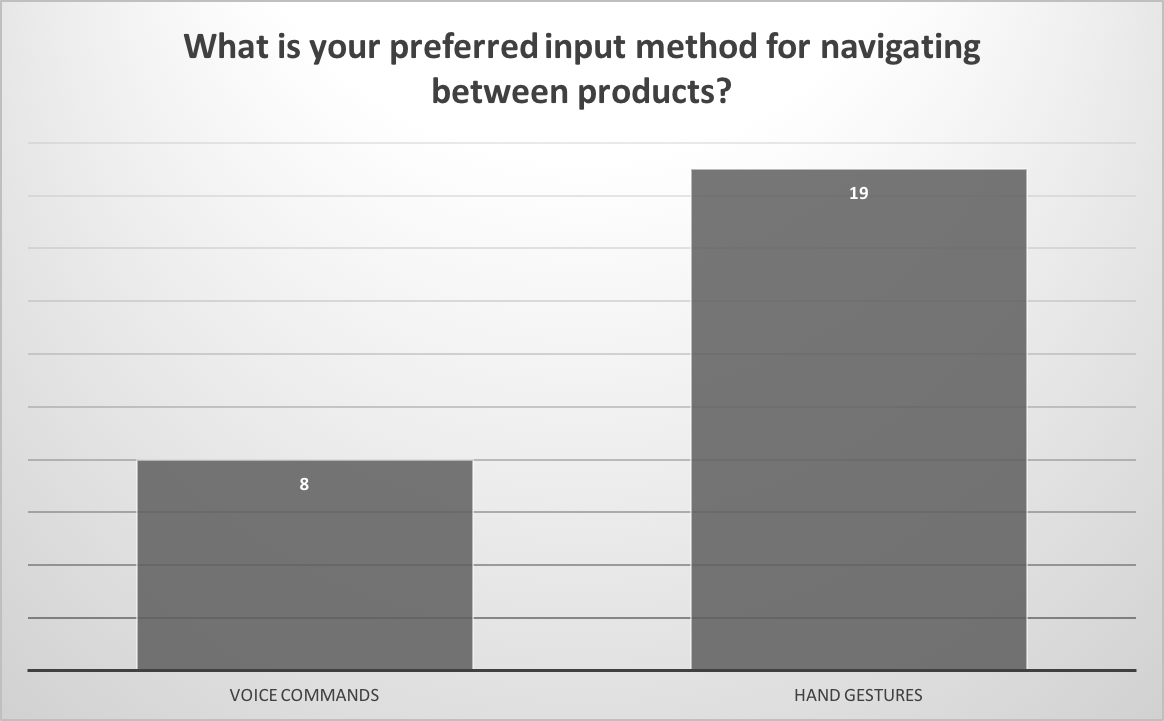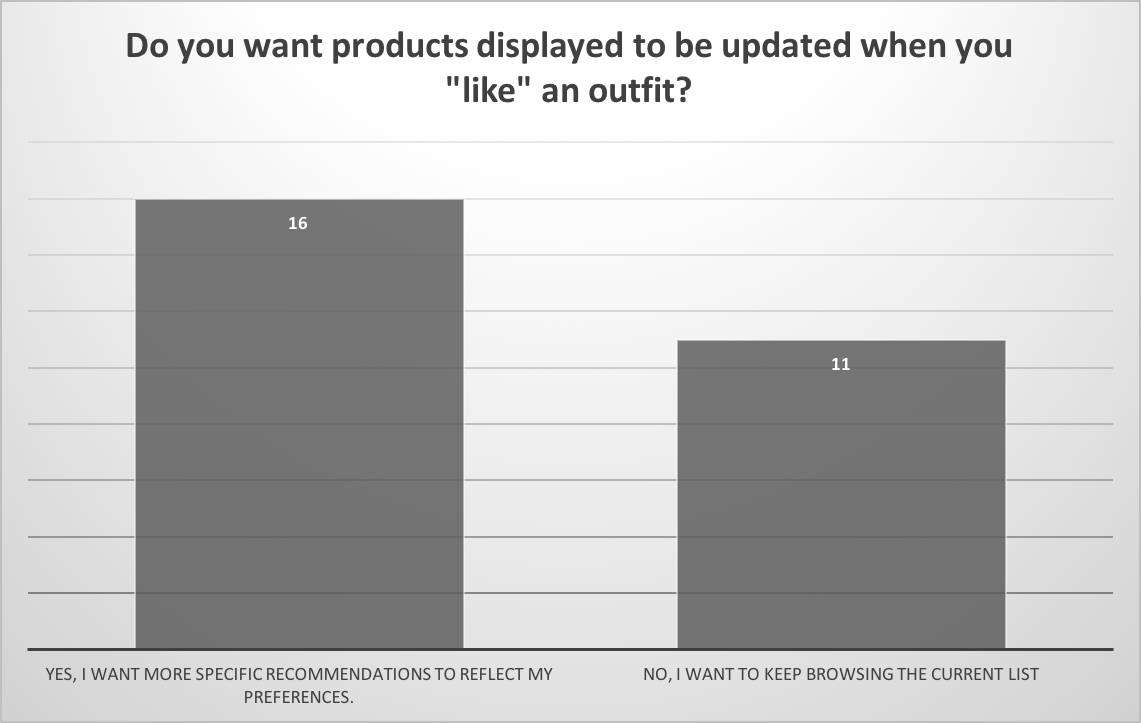The typical end user for this recommendation engine would be loyal Yoox Net-a-Porter clients, or EIPs (Extremely Important Person) as YNAP staff refers to them. This is because the HoloLens application would be offered to them as a novelty when they are invited to visit YNAP offices or in networking events. As such, the persona in queston values high User Experience, responsiveness, simplicity and elegancy in applications which is what we aim to provide with our app.
Based on the personas above, our system should fulfill the following use cases:
- Browse outfits by changing back and forth between top and bottom items.
- Add any given outfit to your list of favourites.
- Navigate to the Favourites section from the Home menu.
- Navigate to the Home section from their Favourites.
The flow of operations of the above cases are depicted in the following diagram:

Bianca is a well known fashion blogger and her website recently reached 2 million followers. With this occasion she decided to do something unique for her followers and the luxury brand Net-a-Porter offered her the possibility to try their new augmented reality app. She thought that this is an amazing opportunity and it would be a good story for her blog. Bianca is using the HoloLens in order to create some outfits using clothes from Net-a-Porter’s website. She is using voice command when she wants to change the top or the bottoms. After a few minutes Bianca already created a few outfits and saved them all. Now, she can go back, decide which is the best outfit and present it to her followers. Bianca successfully completed her goal.
Madison is a popular high fashion model that is going to represent an important clothing company which has a contract with Net-a-Porter. They offered her the possibility to choose her outfit for the next runway which has as a theme street style. Madison decided to create her outfit using Net-a-Porter’s app as it would be easier for her to make a decision by seeing different outfits in 3D. She is using hand gestures to change the tops and bottoms until she finds the perfect jeans and a matching shirt. She saved the outfit, presented it to her managers and they approved it. Madison successfully completed her goal as she is going to wear this outfit on the runway.

